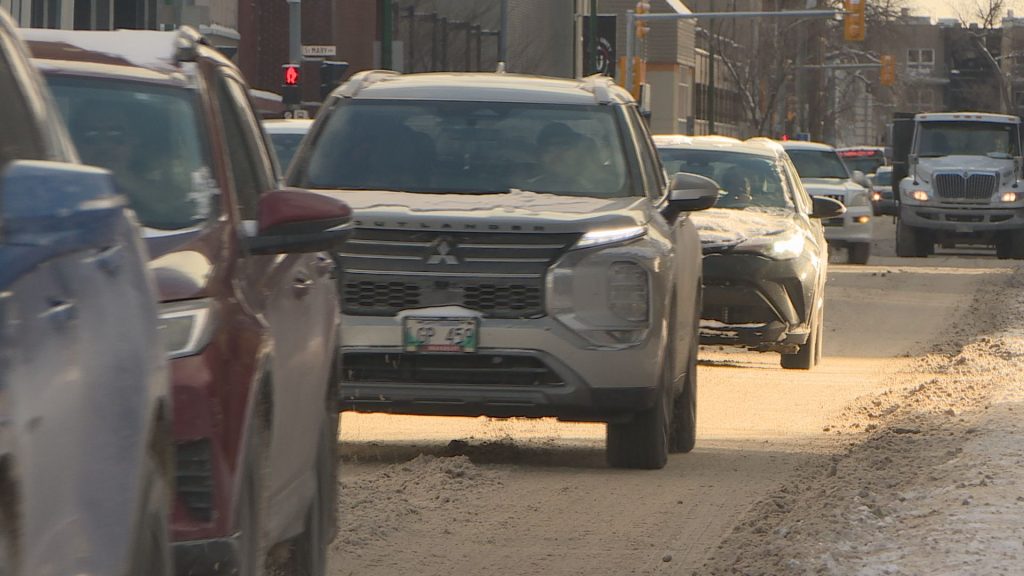Iran marks anniversary of Islamic Revolution amid protests

Posted February 11, 2023 6:46 am.
Iran on Saturday celebrated the 44th anniversary of the 1979 Islamic Revolution amid nationwide anti-government protests and heightened tensions with the West.
Thousands of Iranians marched through major streets and squares decorated with flags, balloons and placards with revolutionary and religious slogans. The military put on display its Emad and Sejjil ballistic missiles and cruise missiles as well as its Shahed-136 and Mohajer drones.
Protesters began pouring into the streets in September after the death of 22-year-old Mahsa Amini, an Iranian-Kurdish woman detained by the country’s morality police. Those demonstrations, initially focused on Iran’s mandatory headscarf, or hijab, soon morphed into calls for a new revolution.
In a speech at Azadi Square in the capital Tehran, President Ebrahim Raisi referred to the protests as a project by Iran’s enemies aimed at stopping the nation from continuing its achievements.
Raisi called the celebration “epic” and a show of “national integrity” while praising post-revolution achievements in the country.
The remarks prompted the crowd to chant “Death to the U.S.”
Meanwhile, Telewebion, a web TV service affiliated with Iranian state TV, was briefly hacked during Raisi’s speech, Iranian media reported. The khabaronline.ir news website said the interruption lasted 19 seconds .
“Edalate Ali” or “The Justice of Ali,” hackers group in a 44-sencond video published on Twitter invited people to take part in nationwide protests next week and urged Iranians to withdraw their money from their banks.
Chants including “Death to Khamenei” and “Death to the Islamic Republic” could be heard on the video and a masked person with a woman’s voice read the message. The group previously hacked into the notorious Evin prison and other government facilities.
The anniversary comes after two years in which celebrations were largely limited to vehicles due to the pandemic that killed more than 140,000 people, in Iran according to official numbers – the highest national death toll in the Middle East.
Processions in Tehran on Saturday started out from several points and converged at Azadi Square. TV showed crowds in many cities and towns and said hundreds of thousands of people participated.
The celebration was a show of power to the protesters. State television refers to the demonstrations as a “foreign-backed riot” rather than homegrown frustration over the death of Amini. Anger also has spread over the collapse of the Iranian rial against the U.S. dollar and Tehran’s arming Russia with bomb-carrying drones in its war on Ukraine, which has also angered the West. Iran says it gave the drones to Russia before the war.
The Iranian government has not offered an overall death toll or number of individuals it has arrested. However, activists outside of the country say at least 528 people have been killed and 19,600 people detained in the crackdown that followed.
Last week, Iran’s state media said the supreme leader ordered an amnesty or reduction in prison sentences for “tens of thousands” of people detained in during the protests, acknowledging for the first time the scale of the crackdown.
The decree by Ayatollah Ali Khamenei, part of a yearly pardoning the supreme leader does before the anniversary, came as authorities have yet to say how many people they detained in the demonstrations.
Referring to the amnesty, Raisi on Saturday urged those who were “deceived by the enemy” to “return to the nation” and promised his administration would show mercy on them, too
Crowds waved Iranian flags, chanted slogans and carried placards with traditional anti-West slogans like “Death to America” and “Death to Israel.” Some burned flags of the U.S. and Israel, a ritual in pro-government rallies.
The Islamic Revolution began with widespread unrest in Iran over the rule of Shah Mohammad Reza Pahlavi. The shah, terminally and secretly ill with cancer, fled Iran in January 1979. Ayatollah Ruhollah Khomeini then returned from exile and the government fell on Feb. 11, 1979, after days of mass demonstrations and confrontations between protesters and security forces.
Later in April, Iranians voted to become an Islamic Republic, a Shiite theocracy with Khomeini as the country’s first supreme leader, with final say on all matters of state.
Months later, when the U.S. allowed the shah into the country for cancer treatment in New York, anger boiled over in Tehran leading to the takeover of the U.S. Embassy in November 1979 by militant students. The subsequent hostage crisis kindled decades of enmity.








